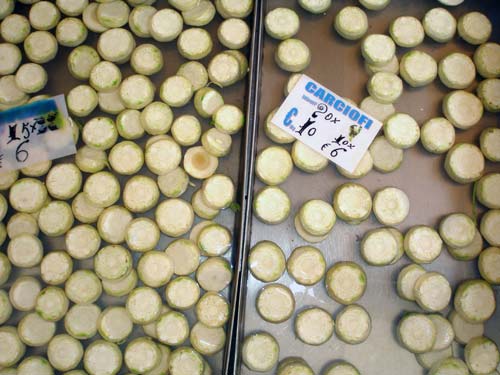Crowberry. A berry rather similar to cranberries but with a black skin, found growing on a shrub in the hills of northern Europe.
Giblets of poultry or game fowl. The edible internal organs including the gizzard, a muscular organ which acts as second stomach, liver, heart and neck.
Russula. Around 750 worldwide species of mushrooms compose the genus Russula and by no means are all of them edible. They are typically common, fairly large, and brightly coloured - making them one of the most recognizable genera among mycologists and mushroom collectors. Their distinguishing characteristics include a white to dark yellow spore print, brittle free white gills, and an absence of partial veil or volva tissue on the stem. Members of the related Lactarius genus have similar characteristics but emit a milky latex when their gills are broken.

Artichoke base. These are prepared by breaking off the stem of the artichoke by bending it until it comes off the base. Cut the base flat and then remove the leaves. Trim the outside of the heart and then remove the choke, being certain to remove all last traces. Rub the heart with lemon to prevent it from discolouring. These are sometimes referred to as artichoke hearts, that are from young artichokes in which the bracts have not yet formed the choke and are included with the base. If you are stuffing an artichoke, take the head, turn it upside down and bash it hard down onto the work surface. This loosens the tight grip the leaves have on each other. You can then force them apart more easily and dig out the choke with a melon baller or some similar tool.